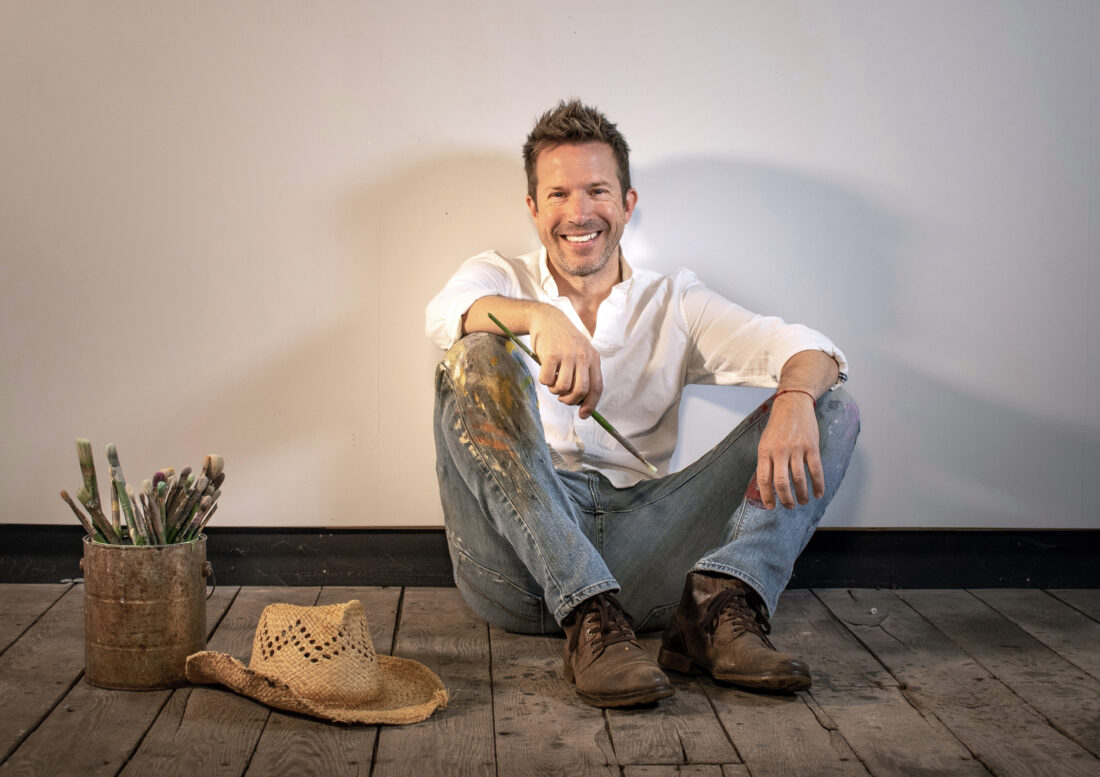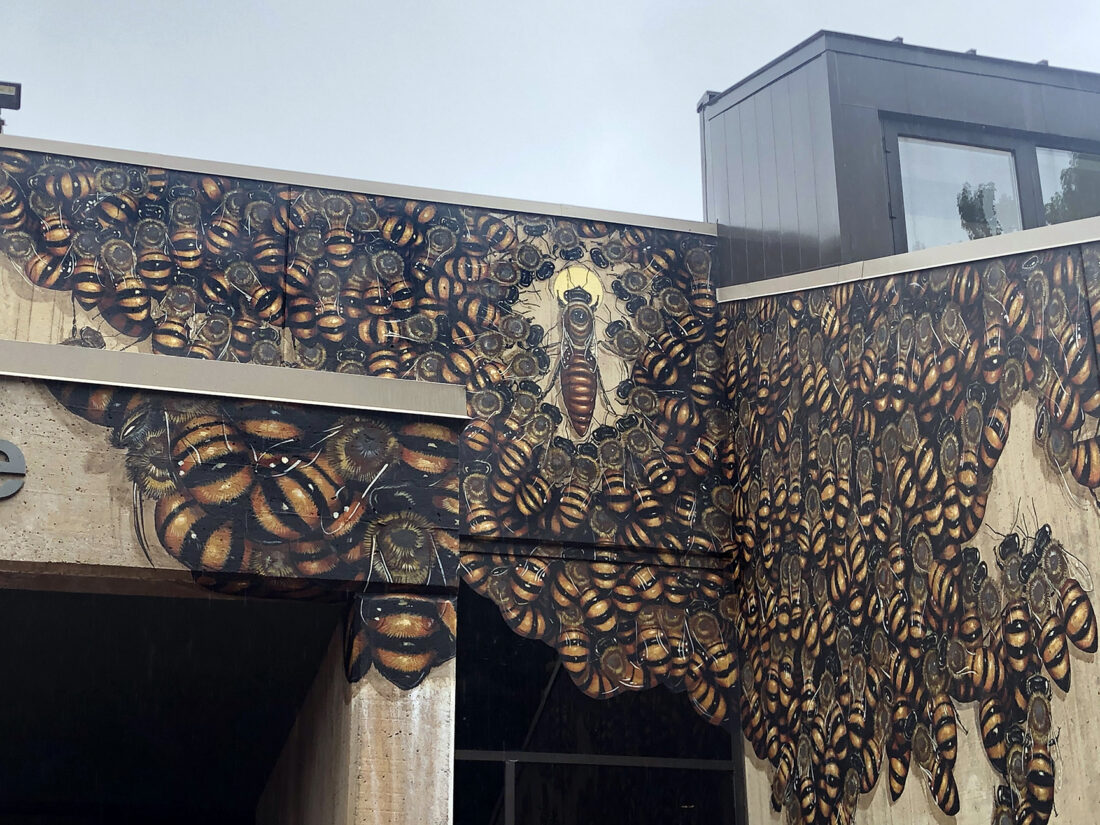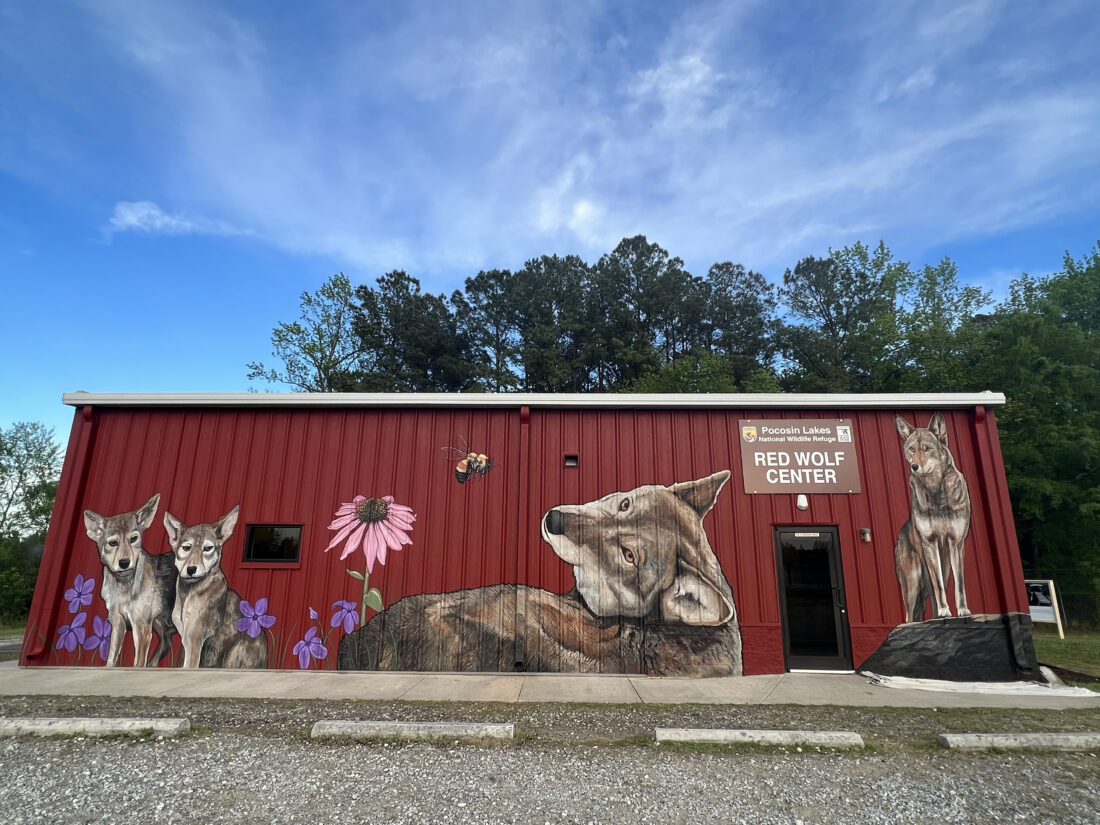When Matt Willey discovered a dying honeybee on the floor of his New York studio in 2008, he never dreamed where the encounter would lead. The artist started researching “altruistic suicide”—a phenomenon in which a sick bee voluntarily leaves the hive to avoid transmitting disease—and an idea began to take shape. He would paint fifty thousand bees, the number associated with a healthy hive, in public spaces across the world.

“The behavior that launched this whole project was the altruistic self-removal of the honeybee based on their collective immune system,” he says. Fittingly, he named his mural-painting project the Good of the Hive. Today, Willey is well on his way to meeting his goal, with forty murals comprising 10,000 bees under his belt. And it all started with the hive-minded help of Southerners.

First, a friend on a bike ride through Florida spied the Harold P. Curtis Honey Co. in the town of LaBelle and thought of Willey’s fledgling project. She tipped him off; he picked up the phone and made a cold call. Though the town had no funds for such an endeavor and murals were, at the time, prohibited, the community worked together to change the ordinance and bring Willey down for ten weeks in 2015 to paint the building.
The Virginia-born fine artist then put out a call through Bee City USA, a conservation initiative that now spans more than two hundred cities, and the town of Carrboro, North Carolina, jumped at the opportunity to have bees on their walls, too. There, he painted the side of the community’s fire station, which had its own queen bee, a female fire chief.
A global movement was born. Willey has since painted bees in China, the United Kingdom, and a dozen U.S. states. “When I started the Good of the Hive, I wanted the organization to reflect the society we live in and what we value,” he says. “Somehow we have forgotten that bees are treasures.”
After a town or organization commissions a Good of the Hive piece, Willey spends anywhere from four to fourteen weeks in the destination, working on the installation while getting to know the community and leading educational talks on the importance of pollinators. His bees are now scattered throughout the South, from the Burt’s Bees campus in Durham, North Carolina, to the Smithsonian’s National Zoo in Washington, D.C.

While pollinators are Willey’s passion, he’s bringing awareness to other conservation issues. In April, he completed a mural at the Red Wolf Center in Columbia, North Carolina. A collaborative project with Weiler Woods for Wildlife, the U.S. Fish and Wildlife Service, and Pocosin Lakes National Wildlife Refuge, the mural highlights “the importance of the food chain, from the apex predator down to the pollinator at the other end of the spectrum,” Willey says. He says many locals didn’t even know the research center—which works toward the long-term survival of the red wolf species, of which some fifteen known animals remain—was there until the mural went up.

The red wolf mural further affirmed to Willey, who long considered himself a “lone ranger,” that public art—much like a beehive—is inherently collaborative. With just two weeks to paint three walls at the center, he knew help was necessary, so he put out a call for local artists. Four women, one as young as fifteen, answered—and only one had ever painted a mural before. To add to the task, Willey and his team would be painting a challenging surface, corrugated metal, during the South’s most unpredictable season, spring.

“It became a teaching experience. At one point, there were fourteen people painting at once, and not one of them had worked on a mural,” Willey shares. “The symbol of working together for this species that is the most critically endangered canid on earth in this place where people go in every day to save them—we came away with this feeling of having done something profound, together.”
Willey’s coming year is already booked solid, with new murals slated for Maine, Colorado, Utah, Georgia, and beyond, but he’s always looking ahead, including to a feature-length documentary slated for release in 2024 that follows Willey’s story from one tiny bee to a globe-spanning art project. He’s also interested in expanding his activism work to other endangered species as well as raising awareness about issues like single-use plastics and petrochemicals.
“We have to start trusting that these problems cannot be solved alone and can be solved by the collective,” he says. “That, to me, is what the art is about.”








